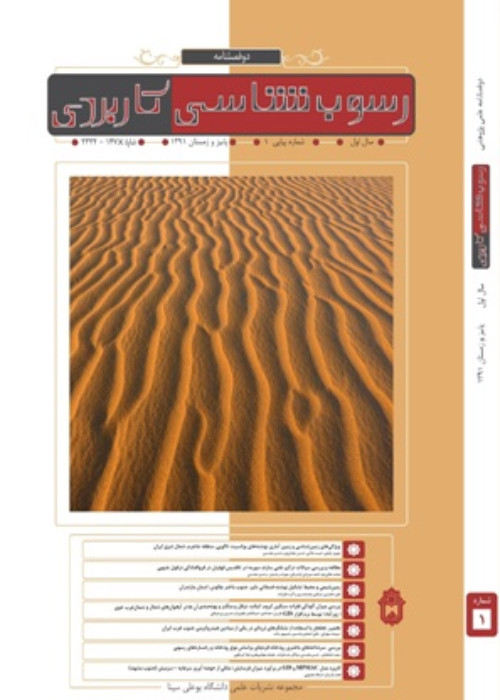The impact of siliciclastic and carbonate composition on the post depositional history: A case study from the Nayband Formation and the Lower Cretaceous sequences, North East Isfahan
Author(s):
Article Type:
Research/Original Article (دارای رتبه معتبر)
Abstract:
This investigation focues on the diagenesis events of the siliciclastic and carbonate rocks of the Upper Triassic and Lower Cretaceous strata in Kuh-e-Bejareh section of northeast Isfahan. The method of study include fieldwork, systematic sampling and thin section petrography of the siliciclastic and carbonate specimens with polarized and cathodoluminescence microscopes. The studied intervals with 167 meter thick includes the upper Qadir Member of Nayband Formation and the siliciclastic (K1) and carbonate rocks (K2) of Lower Cretaceous sequence. The diagenetic studies of siliciclastic petrofacies led to recognition of the bioturbation, alteration of feldspar, type of grain contacts, different cement types include calcite, iron oxide and clay mineral (related to eogenetic stage), chemical compaction, dolomite, overgrowth silica and clay cements (related to the mesogenetic stage). Iron oxide cement and clay minerals, fracturing and vein filling by dolomite are related to telogenetic stage. Studies have shown the effect of sandstone composition on the trend and formation of diagenetic process. Some impact of siliciclastic composition on diagenetic event includes the frequency of clay mineral cement as well as feldspar alteration which are high in the feldspar rich petrofacies of the Qadir Member. Diagenetic studies also shows abundant overgrowth silica cement in quartz-rich petrofacies in the Lower Cretaceous (K1 unit) sequences. Diagenesis study of carbonate rocks (K2 unit) led to recognition of different process such as micritization, bioturbation, fibrous isopachous cement in marine diagenesis stage and pendent and iron oxide cements are related to vadose stage. The pendant, drusy calcite and iron oxide cements are related to pheriatic stage. Burial diagenetic process are prismatic bladed, dolomitic, blocky calcite, syntexial overgrowth cements, compaction and fracturing. Luminescence intense of cements ranging from dark red to non-luminescence that led to the separation of the different phases of cementation in carbonate deposits. During uplift stage iron oxide cement and vein filling fractures occurred. Investigation of all diagenetic events in siliciclastic and carbonate rocks of this study shows that deposits has gone under different stage of diagenesis including early, intermediate and deep burial and uplift under the influence of sediment composition.
Keywords:
Language:
Persian
Published:
Applied Sedimentology, Volume:5 Issue: 10, 2017
Pages:
20 to 42
magiran.com/p1915330
دانلود و مطالعه متن این مقاله با یکی از روشهای زیر امکان پذیر است:
اشتراک شخصی
با عضویت و پرداخت آنلاین حق اشتراک یکساله به مبلغ 1,390,000ريال میتوانید 70 عنوان مطلب دانلود کنید!
اشتراک سازمانی
به کتابخانه دانشگاه یا محل کار خود پیشنهاد کنید تا اشتراک سازمانی این پایگاه را برای دسترسی نامحدود همه کاربران به متن مطالب تهیه نمایند!
توجه!
- حق عضویت دریافتی صرف حمایت از نشریات عضو و نگهداری، تکمیل و توسعه مگیران میشود.
- پرداخت حق اشتراک و دانلود مقالات اجازه بازنشر آن در سایر رسانههای چاپی و دیجیتال را به کاربر نمیدهد.
دسترسی سراسری کاربران دانشگاه پیام نور!
اعضای هیئت علمی و دانشجویان دانشگاه پیام نور در سراسر کشور، در صورت ثبت نام با ایمیل دانشگاهی، تا پایان فروردین ماه 1403 به مقالات سایت دسترسی خواهند داشت!
In order to view content subscription is required
Personal subscription
Subscribe magiran.com for 70 € euros via PayPal and download 70 articles during a year.
Organization subscription
Please contact us to subscribe your university or library for unlimited access!



